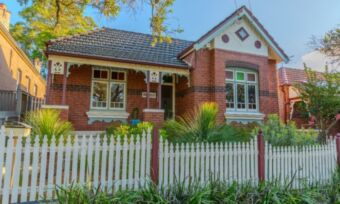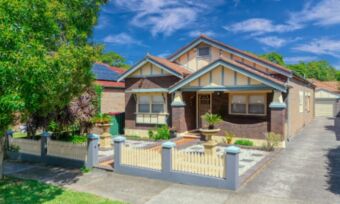ING to introduce variable home loan interest rate below 2%

ING has followed the lead of several other Aussie lenders by lowering its variable home loan interest rates while raising rates on its two to five-year fixed loan products, signalling a desire to attract more borrowers with low variable rates while house prices continue to boom.
The Reserve Bank of Australia (RBA) announced last week that it would continue to hold the official cash rate steady for now, but a number of Australia’s mortgage lenders have begun to shake up their rates, with ING being the latest to follow the trend of hiking long-term fixed rates while lowering variable rates.
Canstar can reveal that, effective Thursday November 11, ING will decrease variable rates for principal and interest and interest-only loans for both owner-occupiers and investors borrowing at least $150,000, while hiking its two, three, four and five-year fixed rates. Its one-year fixed interest rates will remain steady, and the variable rate changes also won’t apply to existing customers.
The move means ING will join the list of lenders on Canstar’s database offering a variable home loan interest rate below 2%, with the rate on its Mortgage Simplifier – Principal & Interest loan dropping by 0.25 percentage points to 1.99% (comparison rate 2.02%) for loans over $150,000 and borrowers with an loan-to-value ratio (LVR) of 80% or higher. However, the bank’s fixed rate increases mean it will no longer be offering a fixed rate starting with a 1.
The biggest hikes in this latest round of changes will be to ING’s three-year fixed rate loans for owner-occupiers – for those with an LVR of up to 80%, this rate is set to rise to 2.69% (comparison rate 3.76%) from 2.19% (comparison rate 3.64%), a difference of 0.50 percentage points. For Orange Advantage customers with the same LVR, the new three-year fixed rate will be 2.59% (comparison rate 3.74%), also up 0.50 percentage points from 2.09% (comparison rate 3.61%).
ING’s rate changes are roughly in line with recent moves from various other home loan lenders – National Australia Bank recently hiked rates for its two-, three-, four- and five-year fixed rate home loans, while cutting variable and one-year fixed rates, while others including CommBank and Westpac have also increased some of their fixed rates in recent weeks.
How have ING’s rates changed over the past year?
ING’s variable rates have fallen across the board since this time last year. For instance, Canstar’s researchers found that owner-occupiers on the Orange Advantage Variable Interest Only loan product, with a $500,000 mortgage and an 80% LVR, would have been on a 3.59% interest rate this time last year.
When ING’s new variable rates kick in on November 11, 2021, borrowers on the same loan product would have an interest rate of 2.74% (comparison rate 3.08%), representing a drop of 0.85 percentage points.
On the fixed rate front, Canstar research found that while ING’s one-year fixed rates aren’t changing tomorrow, they have also dropped across the board since this time last year, with the biggest change in its one-year fixed rate principal and interest loans for investors.
Investors with a $500,000 mortgage and an 80% LVR had a 3.09% rate available to them this time last year, whereas the current rate is 2.34% (comparison rate 4.56%), representing a drop of 0.75 percentage points.
Longer-term fixed rates have increased, however. Owner-occupier Orange Advantage customers on the same $500,000 loan and 80% LVR, for instance, will be paying 2.99% (comparison rate 3.68%) after this latest round of changes, an increase of 0.40 percentage points from a year ago.
With these trends in mind, Canstar finance expert Steve Mickenbecker recently warned that the current low rates on variable and short-term fixed loans wouldn’t last forever, and that Australians may need to consider ‘interest rate proofing’ in anticipation of future rate hikes.
Fears rate rises could push borrowers into mortgage stress
Interest rates in Australia remain at historically low levels, but with house prices on the rise and Aussies paying more and more for homes, there is a potential danger that a rise in the official cash rate could push homeowners into mortgage stress in years to come.
The RBA may be keeping the cash rate steady at the record low of 0.10% for now, but Mr Mickenbecker has warned there may be pressure to raise it earlier than its previously stated target of 2024, and rate rises in years to come could push some Aussie borrowers into mortgage stress.
“Canstar analysis shows that if the cash rate hiked by 0.25 percentage points and lenders passed this on in full, a residential borrower with a $1 million mortgage on the average variable rate of 3.09% would see their monthly loan repayments rise by $137 to reach $4,402,” Mr Mickenbecker said.
“For a residential borrower with a $500,000 loan on the average variable rate, a 0.25 percentage point rate rise would see their monthly repayments increase by $68, to $2,206.
“But this will be just the start of the race for rate increases, and a year down the track would surely see the cash rate increase by a full percentage point. If this happens, the borrower with a $1 million mortgage would see their monthly repayments rise by $561 to $4,826, which is quite a stretch.”
The comparison rate for all home loans and loans secured against real property are based on secured credit of $150,000 and a term of 25 years.
^WARNING: This comparison rate is true only for the examples given and may not include all fees and charges. Different terms, fees or other loan amounts might result in a different comparison rate.

Up to $4,000 when you take out a IMB home loan. Minimum loan amounts and LVR restrictions apply. Offer available until further notice. See provider website for full details. Exclusions, terms and conditions apply.
 Owner occupied
Owner occupied
 20% min deposit
20% min deposit
 Redraw facility
Redraw facility
 Owner occupied
Owner occupied
 20% min deposit
20% min deposit
 Redraw facility
Redraw facility
 Owner occupied
Owner occupied
 30% min deposit
30% min deposit
 Redraw facility
Redraw facility
 Owner occupied
Owner occupied
 30% min deposit
30% min deposit
 Redraw facility
Redraw facility
Canstar may earn a fee for referrals from its website tables, and from Sponsorship or Promotion of certain products. Fees payable by product providers for referrals and Sponsorship or Promotion may vary between providers, website position, and revenue model. Sponsorship or Promotion fees may be higher than referral fees. Sponsored or Promoted products are clearly disclosed as such on website pages. They may appear in a number of areas of the website such as in comparison tables, on hub pages and in articles. Sponsored or Promoted products may be displayed in a fixed position in a table, regardless of the product’s rating, price or other attributes. The table position of a Sponsored or Promoted product does not indicate any ranking or rating by Canstar. For more information please see How We Get Paid.
Cover image source: Sulastri Sulastri/Shutterstock.com
This article was reviewed by our Sub Editor Tom Letts and Deputy Editor Sean Callery before it was updated, as part of our fact-checking process.

Alasdair Duncan is Canstar's Deputy Finance Editor, specialising in home loans, property and lifestyle topics. He has written more than 500 articles for Canstar and his work is widely referenced by other publishers and media outlets, including Yahoo Finance, The New Daily, The Motley Fool and Sky News. He has featured as a guest author for property website homely.com.au.
In his more than 15 years working in the media, Alasdair has written for a broad range of publications. Before joining Canstar, he was a News Editor at Pedestrian.TV, part of Australia’s leading youth media group. His work has also appeared on ABC News, Junkee, Rolling Stone, Kotaku, the Sydney Star Observer and The Brag. He has a Bachelor of Laws (Honours) and a Bachelor of Arts with a major in Journalism from the University of Queensland.
When he is not writing about finance for Canstar, Alasdair can probably be found at the beach with his two dogs or listening to podcasts about pop music. You can follow Alasdair on LinkedIn.
The comparison rate for all home loans and loans secured against real property are based on secured credit of $150,000 and a term of 25 years.
^WARNING: This comparison rate is true only for the examples given and may not include all fees and charges. Different terms, fees or other loan amounts might result in a different comparison rate.
 Owner occupied
Owner occupied
 20% min deposit
20% min deposit
 Redraw facility
Redraw facility
Try our Home Loans comparison tool to instantly compare Canstar expert rated options.
The comparison rate for all home loans and loans secured against real property are based on secured credit of $150,000 and a term of 25 years.
^WARNING: This comparison rate is true only for the examples given and may not include all fees and charges. Different terms, fees or other loan amounts might result in a different comparison rate.





